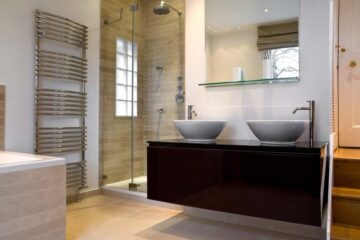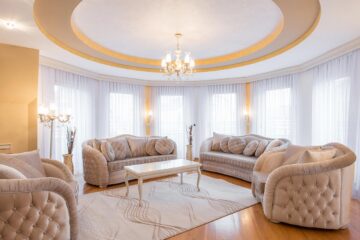Office spaces, hospitality areas, residential designs are going under discussion across every industry about how interiors should be re-designed and re-defined to protect our health, safety, and welfare.
However, being under quarantine and isolated from the world has given us a chance to spend more time at home and to become more aware of how our interior spaces influence our ease, mindset, and motivation to stimulate work.
Simple things that we’ve overlooked— sitting next to someone at a conference, sharing a pen are unexpectedly at the front and core of a discussion about how to make interiors safer for everyone in the post- COVID world.
We know that social distancing plays an important role in protecting health because the virus can be transmitted directly from person to person. But the virus can also be transmitted through everyday objects; especially high touch surfaces like light switches and door handles.
Here are some ways designers assume that COVID -19 can impact the future of interior design;
Homes are more flexible
The future of residential design for homes will be structured as multiple uses space and carving out a similar approach with modern luxury villas functionality by including gyms, workspaces, or creating special rooms for kids to be educated remotely in virtual classes.
Outdoor space
Many interior designers have given a notice that after lockdown and quarantine measures, many clients demand small or big outdoor spaces and prefer a rural lifestyle. Because COVID -19 is changing everything about how we design interiors, especially workplaces, and at least in the near future.
Home offices
Personal hygiene and cleanliness is something we take seriously in the workspace
With lockdown, many companies have moved their work into home and need an attractive, comfortable, and functional workspace to work in it. Technology is at the forefront of home offices; libraries, media suite, recording studio. All companies are realizing that life is online now and our homes need to support this.
If businesses decide that remote working is just as efficient as the office they might determine the physical office is an unnecessary expense and make the remotely business model permanent and that will be boosting home office design!


